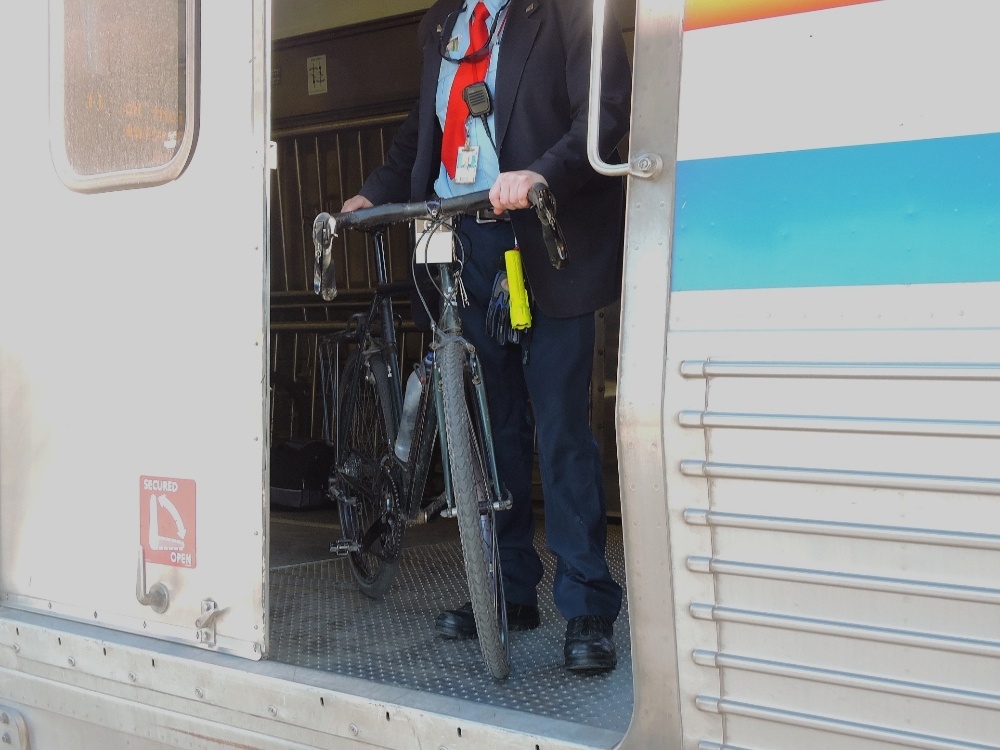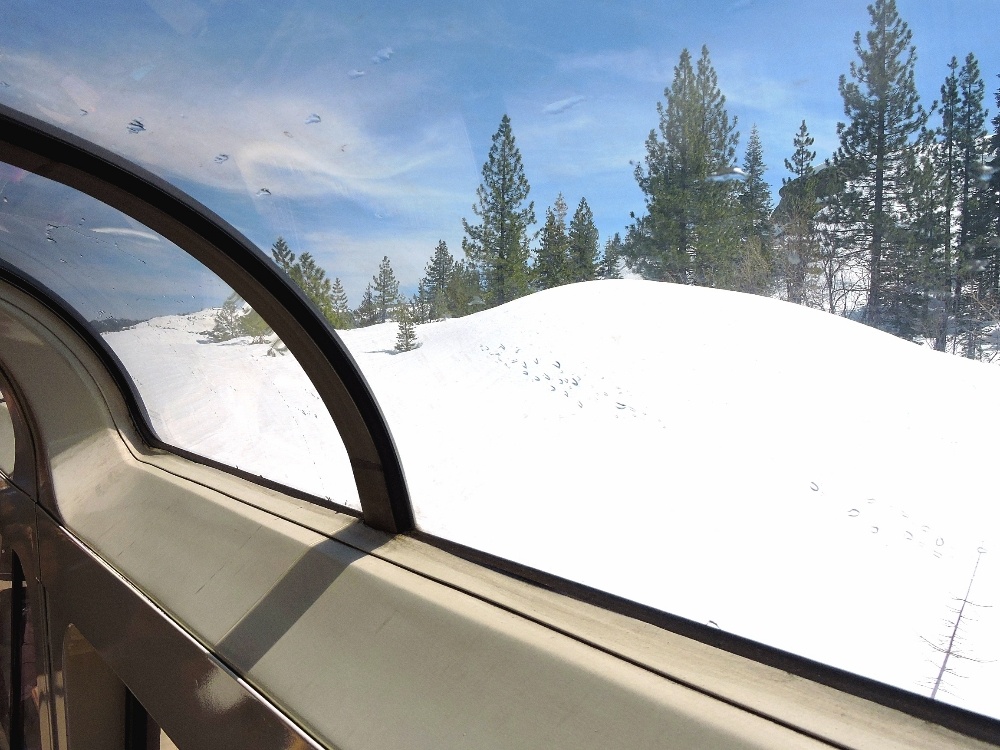I normally would not bother to write a post about something as mundane as a train journey. When I relocated to the American West Coast 26 years ago, I began using Amtrak extensively for travel around the region, almost always with my bike accompanying me. So, for me, rail travel became ordinary rather quickly, though for many of the other passengers likely to be met on board, the experience is often more novel. However, these days a rail transfer during a bicycle tour in the United States is much more user-friendly experience than it formerly had been, thanks to a new policy introduced in the last few years. Consequently, the first rail transfer of the Tour, at least, is relatively post-worthy.
In previous years, Amtrak’s long-distance trains would take bicycles as boxed baggage, requiring a partial disassembly, and, usually, the purchase of an oversized cardboard box. I used this system many times and it worked adequately in most cases, certainly surpassing the requirements of other transport modes in terms of usability. Nevertheless, it always seemed that an even better system should be easily achievable. Thankfully, this is now the case on the long-distance trains (shorter regional routes may have other systems in place,) and the new method is the way things should have always been, on every train, everywhere.
Today, to bring a bike along, you simply reserve one of, usually, six available slots per train, roll your bike onto the platform when the train arrives, and hand it up to the baggage car attendant, who will secure it on a special-purpose rack inside the car. Upon arrival the attendant hands it back to you, and you roll away. Perfect. No risk of a small part disappearing during reassembly, no greasy hands, no idiotic requirement to deflate the tires. The fee is also a little more reasonable than many other options, with the twenty-dollar charge at the time of the Tour being just 10% of what I was forced to pay on a recent flight with an airline.

This journey involved an overnight trip to Sacramento on the Coast Starlight train, followed by an eastbound segment on the California Zephyr, and generally went off smoothly and enjoyably. Though it was not exactly kind to my budget, I opted to use a private room in the sleeping car, which, in addition to being a generally pleasant option, gave me the opportunity to stretch out and recover a little from what had been a rather taxing first few days of the Tour.
The choice to transfer ahead at this point also made sense when reflecting on the image below, showing the Donner Pass in the Sierra Nevada range, which had just experienced a higher than average winter snowpack. The bikeable passes further south will likely be closed for an additional five to seven weeks. I had already crossed the Cascade Range, of course, with its slightly lower level passes, but continuing east from there would have led to a route that also would not have been very appealing at this time the year. In any case, this short transfer only required thirty-six hours and the Tour will continue cycling straight away in a new location, with a somewhat better spring climate, a few interesting places to visit, and, hopefully, the first good birds of the Tour.
